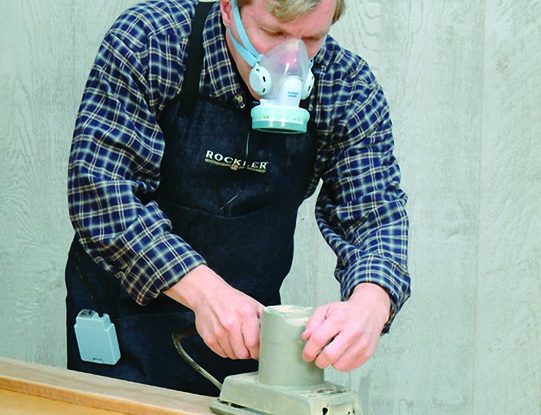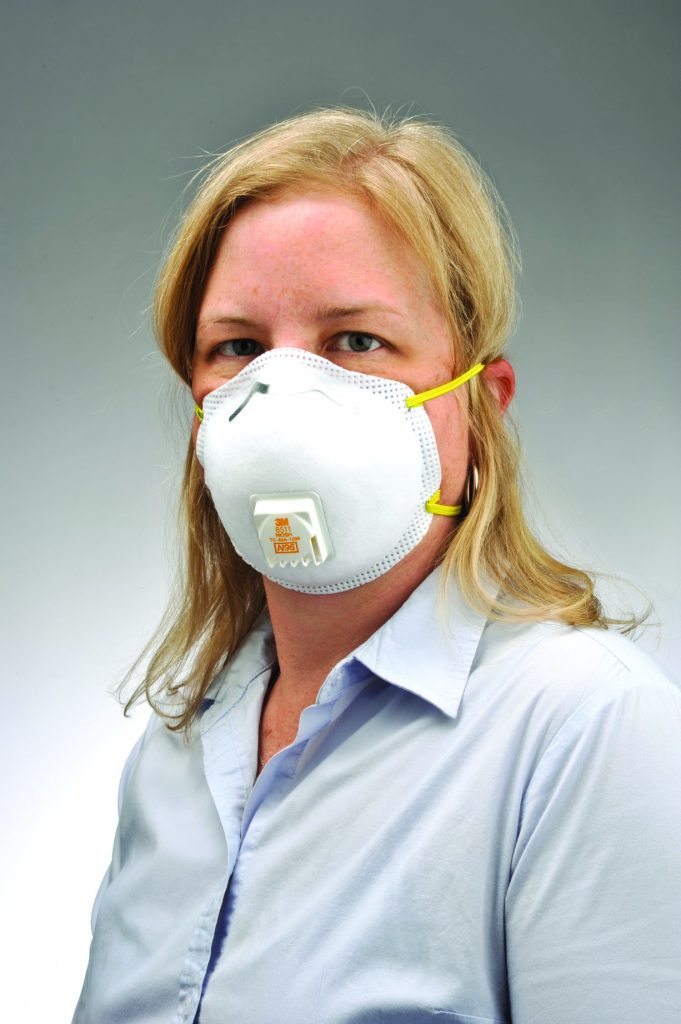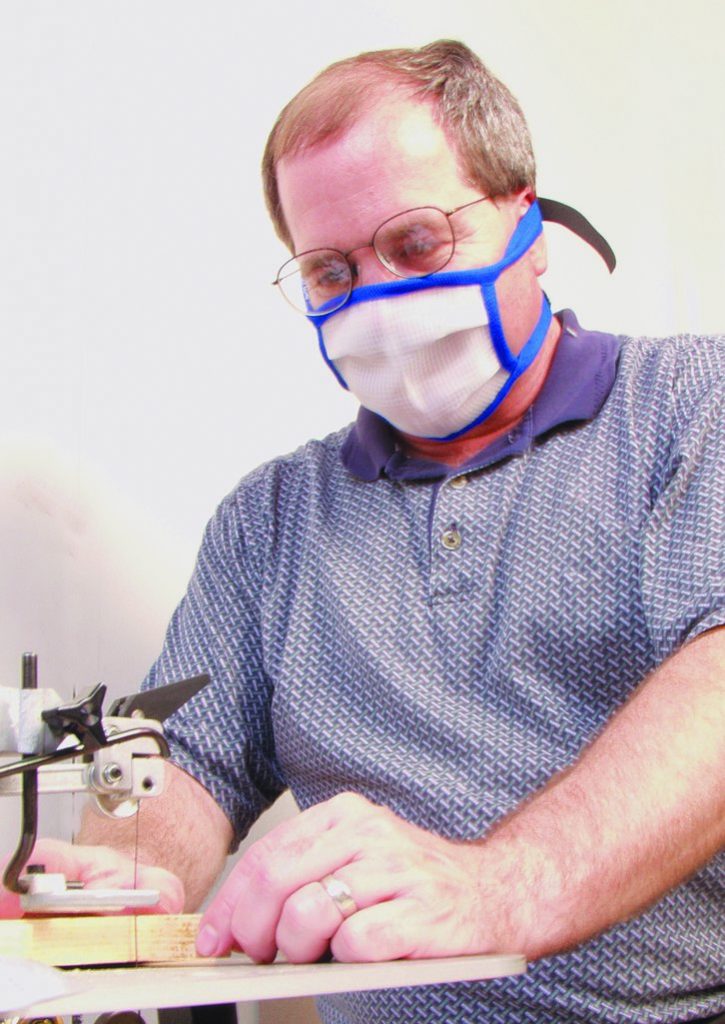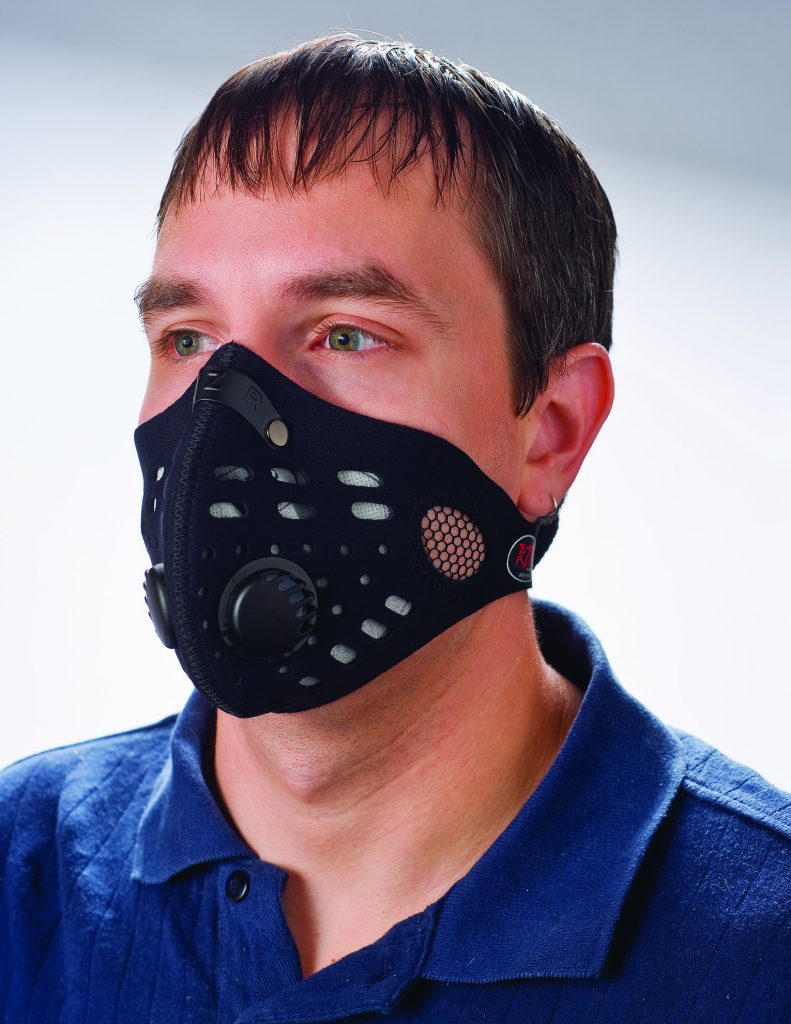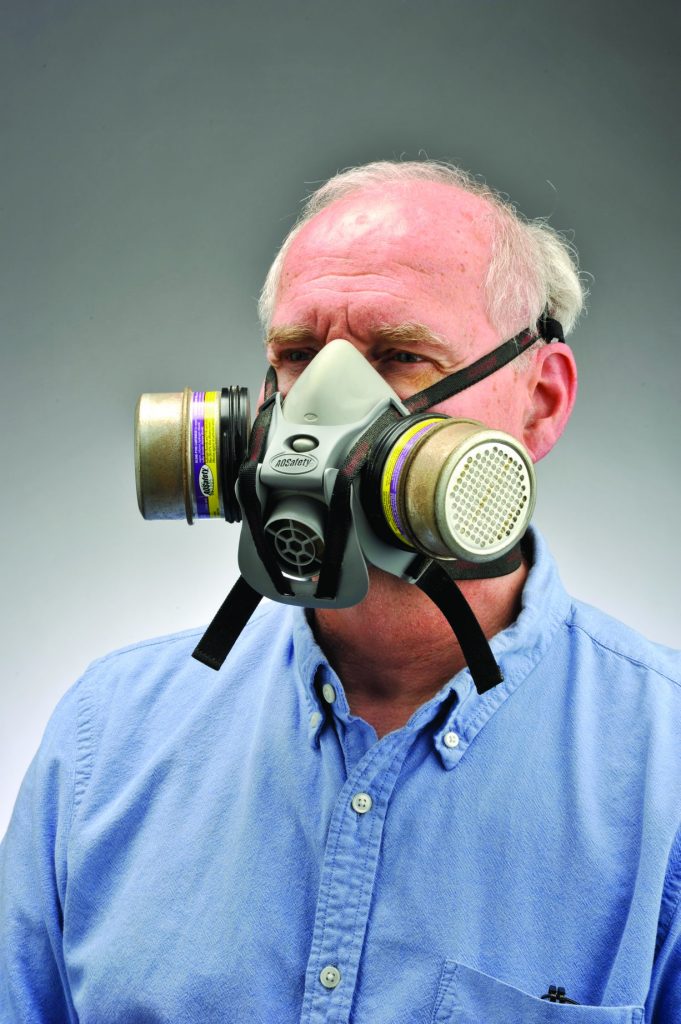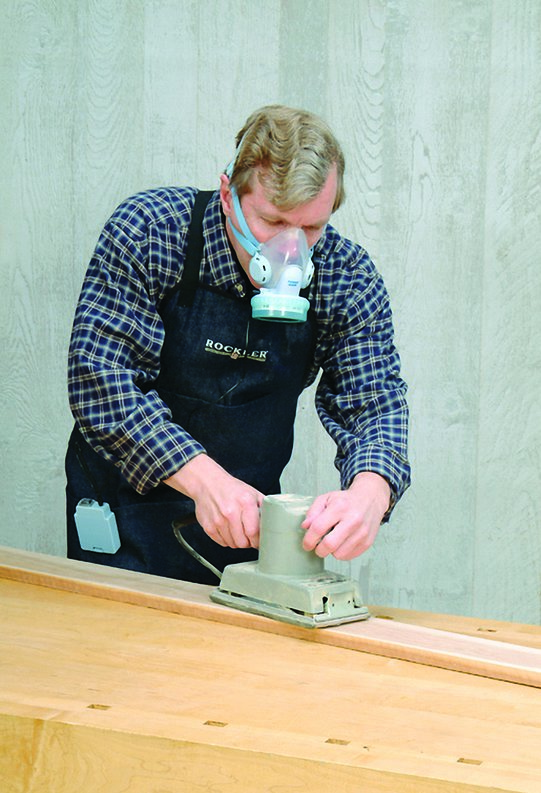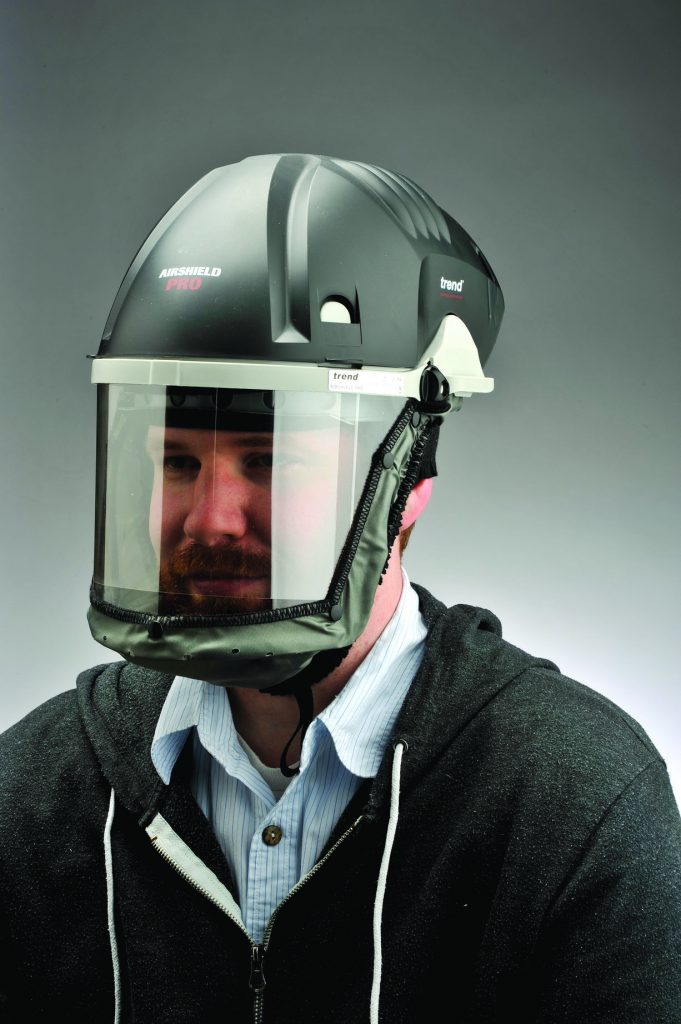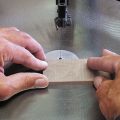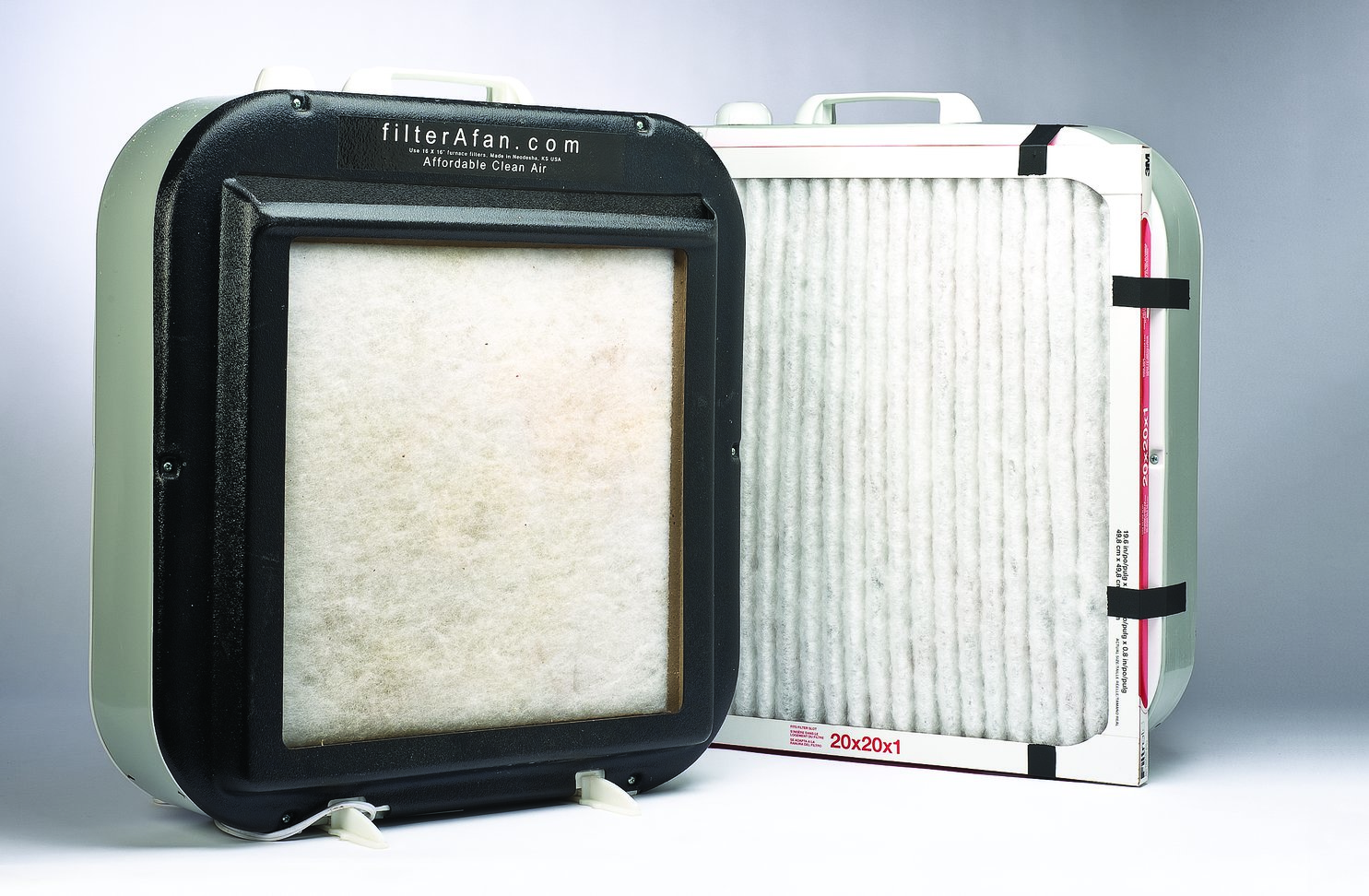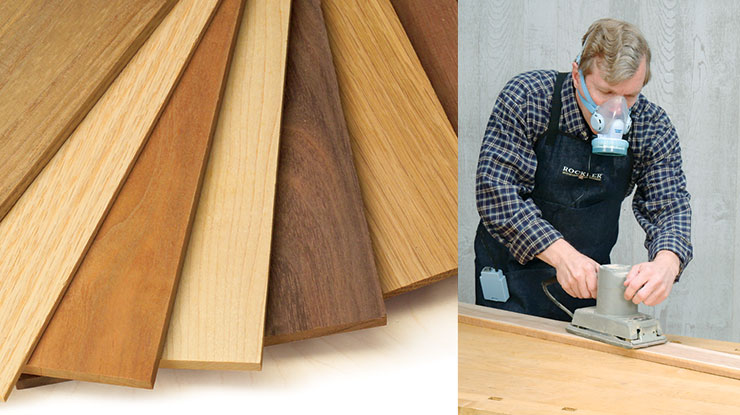Wear a mask to prevent illness and disease caused by dust
by Bob Duncan
This article was first published in issue 53 of Scroll Saw Woodworking & Crafts.
Cutting and sanding scroll saw projects produces a lot of dust. In addition to posing a fire hazard, dust can cause health problems ranging from skin, sinus, and lung irritation to serious impairment and disease. According to the Occupational Health and Safety Administration (OSHA), inhaling fine wood dust in large quantities can even cause cancer.
You can reduce the risk by using dust collectors and shop vacuums, but these only capture the largest particles. Improve your odds by using an air cleaner to catch some of the fine dust; attach a HEPA-grade furnace filter to a box fan to make a simple air cleaner.
To really protect your lungs, however, you need to wear a dust mask or respirator. They are widely available in a variety of styles and price points. The important thing is to pick one and use it every time. It’s a simple way to prevent problems so you can spend more time making projects.
Disposable Dust Masks
You can pick up a box of 50 “nuisance” rated dust masks for less than $15, but they will not catch the smallest particles. (The most dangerous particles are less than 10 microns in size.) Disposable masks are also uncomfortable to wear for long periods of time.
OSHA rates dust masks based on the amount of particles they block. Choose a disposable mask that is rated at least N95, meaning it will block 95% of the particles. I suggest a mask with a metal nose clip that you can bend to fit the shape of your nose and a non-return valve that allows you to exhale easily. Both of these additions help keep your safety glasses from fogging up.
Reusable Dust Masks
For a more comfortable mask, upgrade to a reusable dust mask or half-face respirator.
The Dust Bee Gone (www.DustBeeGone.com) is a popular reusable dust mask. It is not OSHA approved, but the manufacturer claims it filters dust down to 3 microns in size. The Dust Bee Gone is comfortable to wear and can be washed. Unfortunately, some dangerous particles are smaller than 3 microns.
Half-face respirators are a step up from the reusable masks. These masks feature a molded plastic or rubber construction that conforms to your face, use replaceable filters, and are more comfortable to wear. You can choose the level of protection the filters provide, including filters that capture the dangerous vapors from spray finishes or solvents.
One of my favorite half-face masks is the RZ Mask (www.rzmask.com). Originally designed for ATV riders, these neoprene masks are comfortable and feature washable carbon filters fine enough to trap tiny smoke particles.
Powered Respirators
Over time, the filters for disposable dust masks and respirators collect dust particles, making it harder to breath. Woodworkers who already have lung problems can find dust masks and respirators difficult to use. Fortunately, several respirators are designed to use a fan to pull air through the filters, making them easier to wear for longer periods of time.
Half-face powered respirators, such as the Power Air Respirator (www.Rockler.com), are usually less expensive than full-face masks, but they require you to attach a separate battery pack for the filters somewhere on your body. You can pick up one of these units for $100 or less.
The more expensive full-face masks, such as the Trend Airshield (www.trend-uk.com), are more comfortable to wear, protect your whole face, and include a rechargeable battery pack integrated into the mask (so you don’t have to deal with a separate pack). These units tend to cost several hundred dollars.
You have many choices among dust masks and respirators. Pick one and use it every time to prevent dust-related problems before they begin.
Wood Toxicity
All sawdust can irritate your respiratory system, but some varieties of wood are more dangerous than others. For example, fir and hemlock can be irritants, while rengas can cause blisters and fever, and mulga is poisonous. You should always wear a dust mask while cutting and sanding wood, but use extra caution when working with varieties that are known irritants. For a comprehensive list, visit www.wood-database.com.
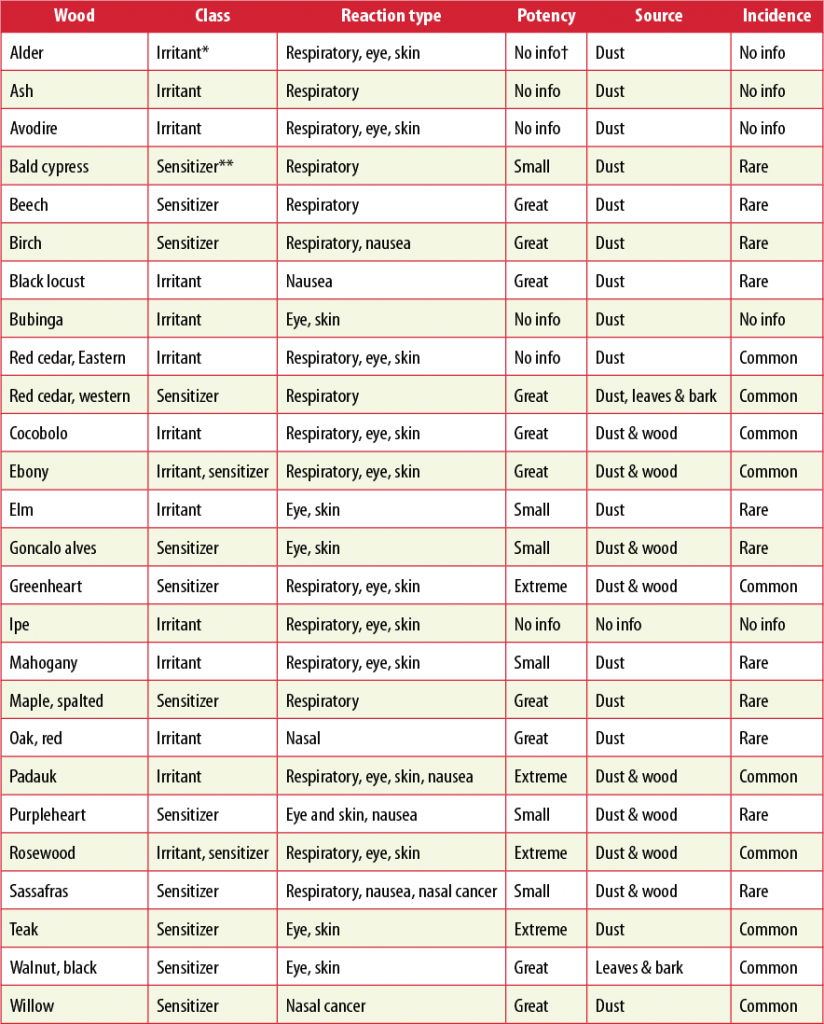
* An irritant causes an almost immediate reaction each time the wood is used.
** A sensitizer does not necessarily irritate, but it makes a person more likely to be strongly affected by a wood classed as an irritant. If you are exposed to an irritant after being exposed to a sensitizer, you are more likely to have a more serious reaction to the irritant.
† No info indicates that the information for this wood is still being developed.
Discuss this material on the Scroll Saw Woodworking & Crafts forums.


